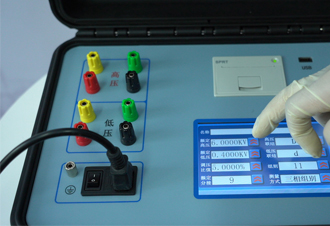 English
English



-
 Afrikaans
Afrikaans -
 Albanian
Albanian -
 Amharic
Amharic -
 Arabic
Arabic -
 Armenian
Armenian -
 Azerbaijani
Azerbaijani -
 Basque
Basque -
 Belarusian
Belarusian -
 Bengali
Bengali -
 Bosnian
Bosnian -
 Bulgarian
Bulgarian -
 Catalan
Catalan -
 Cebuano
Cebuano -
 China
China -
 China (Taiwan)
China (Taiwan) -
 Corsican
Corsican -
 Croatian
Croatian -
 Czech
Czech -
 Danish
Danish -
 Dutch
Dutch -
 English
English -
 Esperanto
Esperanto -
 Estonian
Estonian -
 Finnish
Finnish -
 French
French -
 Frisian
Frisian -
 Galician
Galician -
 Georgian
Georgian -
 German
German -
 Greek
Greek -
 Gujarati
Gujarati -
 Haitian Creole
Haitian Creole -
 hausa
hausa -
 hawaiian
hawaiian -
 Hebrew
Hebrew -
 Hindi
Hindi -
 Miao
Miao -
 Hungarian
Hungarian -
 Icelandic
Icelandic -
 igbo
igbo -
 Indonesian
Indonesian -
 irish
irish -
 Italian
Italian -
 Japanese
Japanese -
 Javanese
Javanese -
 Kannada
Kannada -
 kazakh
kazakh -
 Khmer
Khmer -
 Rwandese
Rwandese -
 Korean
Korean -
 Kurdish
Kurdish -
 Kyrgyz
Kyrgyz -
 Lao
Lao -
 Latin
Latin -
 Latvian
Latvian -
 Lithuanian
Lithuanian -
 Luxembourgish
Luxembourgish -
 Macedonian
Macedonian -
 Malgashi
Malgashi -
 Malay
Malay -
 Malayalam
Malayalam -
 Maltese
Maltese -
 Maori
Maori -
 Marathi
Marathi -
 Mongolian
Mongolian -
 Myanmar
Myanmar -
 Nepali
Nepali -
 Norwegian
Norwegian -
 Norwegian
Norwegian -
 Occitan
Occitan -
 Pashto
Pashto -
 Persian
Persian -
 Polish
Polish -
 Portuguese
Portuguese -
 Punjabi
Punjabi -
 Romanian
Romanian -
 Russian
Russian -
 Samoan
Samoan -
 Scottish Gaelic
Scottish Gaelic -
 Serbian
Serbian -
 Sesotho
Sesotho -
 Shona
Shona -
 Sindhi
Sindhi -
 Sinhala
Sinhala -
 Slovak
Slovak -
 Slovenian
Slovenian -
 Somali
Somali -
 Spanish
Spanish -
 Sundanese
Sundanese -
 Swahili
Swahili -
 Swedish
Swedish -
 Tagalog
Tagalog -
 Tajik
Tajik -
 Tamil
Tamil -
 Tatar
Tatar -
 Telugu
Telugu -
 Thai
Thai -
 Turkish
Turkish -
 Turkmen
Turkmen -
 Ukrainian
Ukrainian -
 Urdu
Urdu -
 Uighur
Uighur -
 Uzbek
Uzbek -
 Vietnamese
Vietnamese -
 Welsh
Welsh -
 Bantu
Bantu -
 Yiddish
Yiddish -
 Yoruba
Yoruba -
 Zulu
Zulu
impedance voltage test of transformer
Impedance Voltage Test of Transformer Understanding Its Importance and Procedure
Transformers are critical components in electrical power systems, serving the essential function of voltage regulation and efficient power distribution. One vital test applied to transformers is the impedance voltage test. This test not only assesses the operational efficacy of a transformer but also helps in diagnosing potential issues that could lead to failures. In this article, we will explore the significance of the impedance voltage test, its procedure, and the insights it provides.
Significance of the Impedance Voltage Test
The impedance voltage test is fundamental for several reasons. Primarily, it determines the transformer's voltage drop under load conditions. When a transformer operates, its windings have inherent resistance and reactance that can introduce a voltage drop. This impedance voltage is key in understanding how much voltage is 'lost' in the transformer under specified load conditions. Furthermore, this test is vital for calculating short-circuit currents, which is paramount for designing protection systems in electrical networks.
Additionally, the impedance voltage measurement assists in evaluating transformer health and integrity. By comparing the test results with specified values, technicians can identify abnormalities such as winding faults or short circuits. A significant deviation from expected values might indicate insulation breakdown or mechanical issues, which, if left unchecked, can lead to catastrophic failures.
Procedure of the Impedance Voltage Test
The impedance voltage test, also known as the short-circuit test, is conducted in a controlled environment. It usually occurs in a laboratory setting or at the installation site, depending on the transformer size and conditions. Here’s a step-by-step overview of the procedure
impedance voltage test of transformer

1. Preparation Ensure the transformer is isolated from the power network. Safety precautions must be in place, including grounding, to prevent electrical hazards.
2. Connection Setup Connect the primary winding of the transformer to a suitable AC voltage source. The secondary winding is to be short-circuited using a low-resistance wire. This configuration allows the test to measure the impedance during a controlled load condition.
3. Applying Voltage Gradually increase the input voltage while monitoring the current flowing through the winding. It is crucial to note the current and voltage levels where the transformer achieves nominal operating conditions.
4. Measurement Record the voltage applied to the primary winding when the rated current flows in the windings. This value represents the impedance voltage (often expressed as a percentage of the rated voltage).
5. Analysis Compare the obtained values with the manufacturer's specifications. Calculate the impedance percentage, which typically helps in further analysis of the transformer's performance under load and its capability to handle fault conditions.
Conclusion
The impedance voltage test is a pivotal process in transformer maintenance and operation. By gauging the voltage drop across the transformer's windings, this test provides indispensable data for troubleshooting, efficiency analyses, and ensuring the reliability of power distribution systems. Regular testing not only prolongs transformer life but also enhances overall system stability. Through diligent application of this test, engineers can protect valuable infrastructure, ensuring a consistent and safe supply of electricity for all.
-
Ensuring SF₆ Gas Safety: Introducing PUSH’s Integrated SF₆ Analyzer for Dew Point, Purity, and Decomposition MonitoringNewsJul.10,2025
-
Exploring the Main Types of Industrial Endoscopes and Their Applications Across IndustriesNewsJul.04,2025
-
Testing Equipment Industry Sees Major Advancements in 2025: Smart & Precision Technologies Lead the WayNewsJun.06,2025
-
Applications of Direct Current Generators in Renewable Energy SystemsNewsJun.05,2025
-
Hipot Tester Calibration and Accuracy GuidelinesNewsJun.05,2025
-
Digital Circuit Breaker Analyzer Features and BenefitsNewsJun.05,2025



